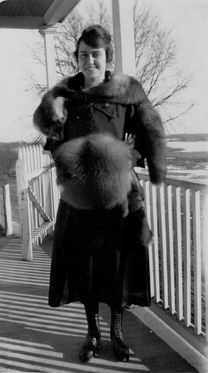
FELDMANN FARMSTEAD
THE IMMIGRANTS
Did you know that the Richard T. Anderson Conservation Area was once a farm? In the 1860s, it was part of a 174-acre section of land that was home to two of Eden Prairie's early settlers.
Fridolin and Elizabeth Feldmann immigrated to the United States in 1850 from Naefels, Switzerland, and likely proceeded by riverboat to this area. They lived in the Chanhassen area until 1864 when they purchased this land that was to become their farm. It was a desirable location, with a creek, fresh spring water, and a south-facing hillside for a home site. The farmhouse was located where the rain shelter now stands.
Fridolin and Elizabeth raised 7 children on the farm (4 other children died). They were successful farmers and by 1898 the farm had grown to 251 acres of land, making it the third-largest farm by acreage in Eden Prairie. Their property extended one mile along the bluffs from the Carver County line to just east of what is now Dell Road. It touched the shore of the lowland lake access to the present highway and went up and over the creek valley and bluff tops.
Fridolin Feldmann died in 1889 and Elzabeth in 1901. Their son Joseph and his wife Mary took over the farm and with the help of some of his siblings continued the operation. The farm continued to prosper, with fine harvests of fruits and vegetables finding a ready market in the area. Nonetheless, it was primarily a dairy operation, with the cattle finding ample grazing on the hillside, Wheat, corn, and alfalfa were grown on the top of the bluffs.
Joseph and Mary Feldmann sold the farm to Mr. and Mrs. Axel Erickson in 1942. Their nephew, long-time Eden Prairie resident Sever Peterson, worked on the Erickson farm as a boy. The farm was purchased in 1962 by Sever's brother, Darrel. Server continues to farm in the area and Feldmann descendants still live in Eden Prairie and the surrounding region.
RECENT HISTORY
In 2002, the City of Eden Prairie purchased the land and preserved it as the Richard T. Anderson Conservation Area. The Feldmann farmhouse was saved from destruction by Sever Peterson, who moved it to his property two miles east of where it stood.
The city was engaged in a farsighted project to restore the land to something resembling its historic state. It is removing red cedar, buckthorn, and prickly ash to restore the prairie. Occasional controlled burns are conducted to bring back the native prairie vegetation. As you walk the trails look for the old farming operation, but imagine what the hills and valley looked like when it was first homesteaded by Feldmanns in 1864





